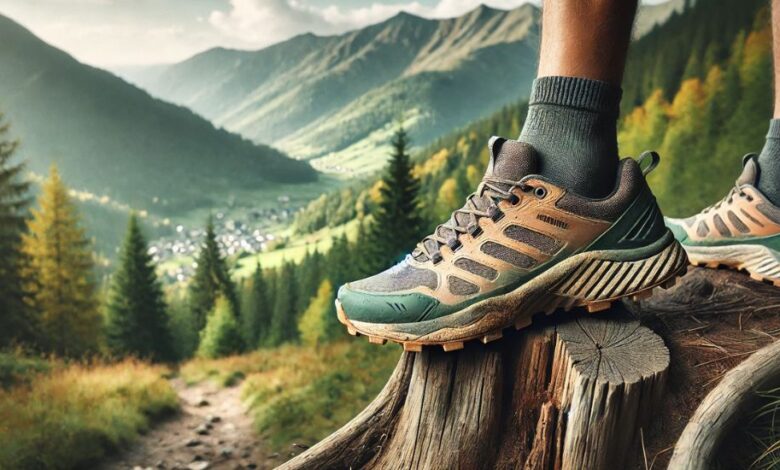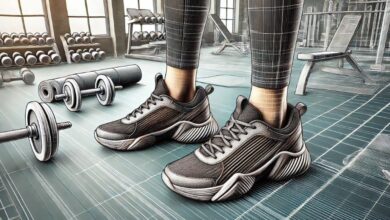The Best Trail Running Shoes: A Guide to Choosing the Right Pair

At USA Magzines, we know how important the right footwear is for tackling rugged trails and off-road terrain. If you’re passionate about outdoor adventures and running, finding the best trail running shoes is crucial to enhancing your performance and keeping your feet safe. With the growing number of options available in the market, selecting the right pair can be overwhelming. In this article, we will explore the top features, styles, and considerations when choosing the best trail running shoes for your next adventure.
What Makes the Best Trail Running Shoes?
Trail running shoes are designed to offer comfort, stability, and protection on uneven surfaces, ensuring you can handle any trail conditions. While every runner’s needs vary depending on their running style and terrain preference, several key features make a trail running shoe stand out from the rest.
1. Durability and Protection
One of the most important features of the best trail running shoes is their durability. These shoes are built to endure rough and tough conditions, such as rocks, roots, and unpredictable terrain. Look for shoes with reinforced toes, thicker midsoles, and high-quality outsoles that protect your feet from potential injuries.
The outer material plays a significant role in durability. Shoes with durable synthetic fabrics, or a blend of leather and mesh, can prevent wear and tear while allowing breathability. At USA Magzines, we recommend shoes like the Salomon Speedcross series, known for their exceptional durability and protection on rugged trails.
2. Traction and Grip
Another key factor to consider when selecting the best trail running shoes is the level of traction. The outsole of the shoe should offer superior grip on various surfaces, from muddy paths to rocky trails. Lugs, or the protruding parts on the sole, are critical for providing grip. Shoes with aggressive lugs are ideal for muddy or wet conditions, while shallower lugs work better on dry, rocky terrain.
Popular models like the La Sportiva Bushido II and the Hoka One One Speedgoat series are well-known for their exceptional traction. Their outsoles are designed to grip a wide variety of surfaces, ensuring you remain steady no matter where your trail leads.
3. Cushioning and Comfort
Comfort is essential in any running shoe, but it’s especially important when it comes to trail running, as you’ll be navigating uneven surfaces that can put extra strain on your joints. The best trail running shoes provide a balance of cushioning and responsiveness to protect your feet while maintaining agility.
Different shoes offer varying levels of cushioning, depending on your preferences. Some runners prefer maximum cushioning to absorb impact, while others seek a more minimalist feel for better ground connection. For example, shoes like the Brooks Cascadia 16 offer soft cushioning, while the Altra Lone Peak series provides a more natural feel with less padding.
4. Fit and Support
Fit and support are non-negotiable when it comes to trail running. A shoe that fits too loosely can cause blisters and reduce stability, while a shoe that is too tight can lead to discomfort and injury. The best trail running shoes should fit snugly but comfortably, with enough room for your toes to move freely.
In addition to a good fit, support features such as ankle collars, midfoot wraps, and reinforced heel counters help ensure that your feet remain stable during dynamic movements. Shoes like the Saucony Peregrine and the Adidas Terrex series are designed to offer both a secure fit and excellent support for runners tackling technical trails.
5. Water Resistance and Breathability
Weather conditions can drastically affect your trail running experience. Some runners need shoes that can handle wet conditions, while others prioritize breathability for hot and dry climates. Water-resistant shoes can be a lifesaver if you’re running in rainy or muddy conditions. However, these shoes tend to be less breathable, which can lead to sweaty feet in hot weather.
On the other hand, shoes designed with highly breathable fabrics may not offer enough protection in wet environments. Models like the Merrell Moab Flight offer a good balance of water resistance and breathability, making them a solid choice for varying weather conditions.
6. Weight and Agility
Weight is another critical factor to consider when selecting the best trail running shoes. Lighter shoes allow for greater agility and speed, especially on more technical trails, while heavier shoes often provide better cushioning and protection. The right balance depends on your personal preference and the type of terrain you typically run on.
For runners looking for speed, shoes like the Nike Terra Kiger or the Inov-8 Trailroc series are lightweight and designed for quick, agile movements. For more protection and support on longer, rougher trails, consider shoes like the Hoka One One Mafate or the Scarpa Spin Ultra.
Choosing the Right Shoes for Different Trail Types
The right pair of trail running shoes also depends on the type of trail you frequent. Here’s a quick guide to help you decide based on trail conditions:
- Muddy Trails: Shoes with deeper lugs and a strong grip, like the Salomon Speedcross, are ideal for tackling wet, slippery paths.
- Rocky Trails: For rocky and uneven surfaces, shoes with reinforced midsoles and excellent grip, like the La Sportiva Bushido II, provide stability and protection.
- Dry Terrain: If you run on dry, hard-packed trails, look for shoes with shallow lugs and a lighter design, such as the Altra Lone Peak or the Nike Terra Kiger.
How to Care for Your Trail Running Shoes
Once you’ve invested in the best trail running shoes, it’s essential to take good care of them to extend their lifespan. Here are a few tips to help maintain your shoes:
- Clean them regularly: After a run, remove dirt and debris by brushing off your shoes or rinsing them with water. Allow them to dry naturally.
- Check the soles: Monitor the wear and tear on the outsole and replace your shoes when the lugs or grip start to fade.
- Air them out: Avoid storing damp shoes in closed spaces, as this can lead to mold growth and a breakdown in materials.
Conclusion: Finding the Best Trail Running Shoes for You
When it comes to trail running, having the right shoes is critical for comfort, performance, and injury prevention. Whether you’re tackling rugged mountain paths or smoother forest trails, the best trail running shoes will offer a perfect balance of grip, durability, comfort, and protection.
At USA Magzines, we encourage every runner to carefully consider their specific trail-running needs, including terrain type, weather conditions, and personal comfort preferences. With a wide variety of shoes available, there is no one-size-fits-all solution. By evaluating your needs and the shoes’ key features, you can confidently choose the best trail running shoes for your next adventure.




